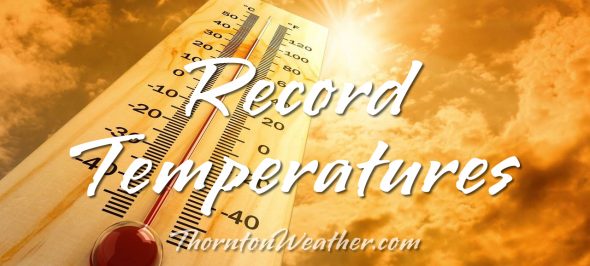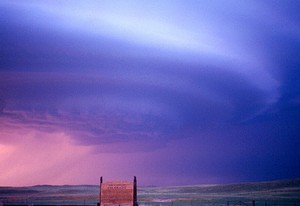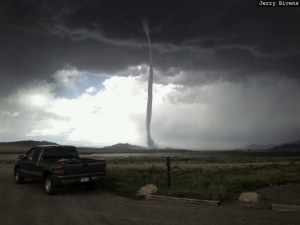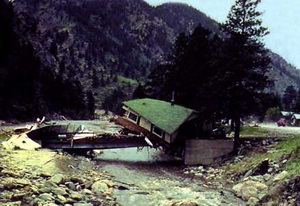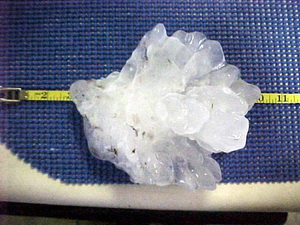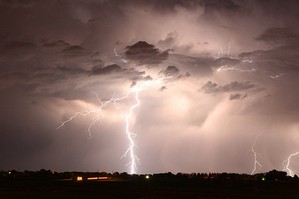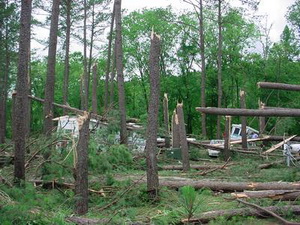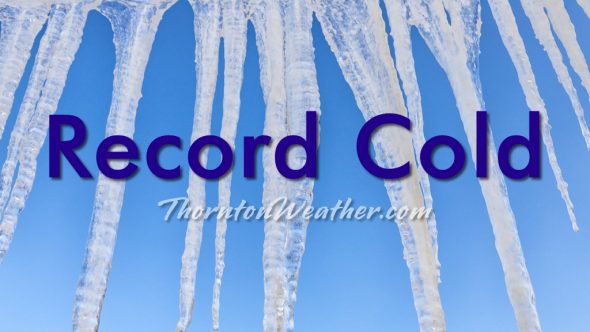May can bring a variety of conditions from snow and cold to severe thunderstorms and flooding rains. Looking back at this week in Denver weather history we see where all of those events have made an appearance in our past.
From the National Weather Service:
29-2
In 1954…a major storm dumped 10.1 inches of snowfall at Stapleton Airport. Most of the snow…7.5 inches…fell on the 29th and 30th. The maximum snow depth on the ground was 5 inches on the 30th due to melting. No strong winds accompanied the storm.
30-1
In 1980…to the west of Denver…heavy rain changing to snow buried the foothills above 7 thousand feet in 4 to 8 inches of snow. Precipitation in the foothills ranged from 1 to 3 inches…which caused some local flooding. Rain fell at lower elevations. Rainfall at Stapleton International Airport totaled 1.05 inches from the storm.
1
In 1902…northwest winds were sustained to 68 mph with gusts as high as 74 mph in the city during the early morning. The apparent very strong Chinook winds warmed the temperature to a high of 78 degrees.
In 1912…south winds were sustained to 42 mph with gusts as high as 58 mph. South to southwest winds were strong all afternoon.
In 1935…a moderate duststorm blew into the city at around 2:00 pm on northwest winds sustained to 17 mph with gusts to 19 mph. Later in the afternoon…the dust receded to the east in advance of a rainstorm from the west.
In 1988…very strong winds behind a vigorous cold front produced a blinding dust storm that closed I-70 east of Denver. Northeast winds over metro Denver peaked to 45 mph at Stapleton International Airport…but only kicked up some blowing dust. The temperature plunged from a high of 76 degrees at midday to 36 degrees at midnight as light rain changed to light snow.
In 1991…3/4 inch diameter hail fell at Standley Lake in northwest metro Denver.
In 1999…heavy snow developed in the foothills above 7 thousand feet elevation. Snow totals included: 10 inches at Rollinsville…7 inches near conifer…and 6 inches atop Crow Hill. Rain fell across metro Denver.
In 2015…a teenager was critically injured when he struck by lightning near Town Center Mall in Aurora. He was standing on a hill in an open field. A severe thunderstorm produced hail up to quarter size near Evergreen.
1-2
In 1903…post-frontal rain changed to light snow overnight… But totaled only 2.0 inches. This was the last snow of the season. Northeast winds were sustained to 45 mph with gusts to 48 mph on the 1st.
1-5
In 1898…snowfall totaled 15.5 inches in downtown Denver. Most of the snow…6.2 inches…fell on the 3rd. Most of the snow melted as it fell. The greatest snow depth on the ground was only 2.5 inches on the 3rd at 8:00 pm. This was the only snowfall during the month. Northeast winds were sustained to 22 mph on the 1st.
2
In 1874…strong winds upset two railroad passenger coaches near Georgetown. The baggage was retrieved and placed in a heavy…large wagon. The passengers then seated themselves on top of the baggage. Another strong gust of wind upset the wagon. The driver’s shoulder was dislocated…and a passenger’s leg was badly injured. In Denver…northwest winds increased and blew in gusts and heavy winds were observed on the ridge tops. On the Kansas Pacific R.R. east of Denver…the wind was so strong that it blew the train back several lengths…which caused the train to be about 7 hours late arriving in the city.
In 1901…south winds were sustained to 50 mph with gusts to 60 mph from an apparent thunderstorm with hail.
In 1944…snowfall of 8.3 inches was accompanied by a thunderstorm. This was the last snowfall of the season and the only snow of the month. Northwest winds were sustained to 25 mph.
In 1955…southwest winds at speeds of 37 mph with gusts as high as 58 mph caused some blowing dust at Stapleton Airport.
In 1983…1 inch diameter hail fell a few miles south of Bennett.
In 1984…3/4 inch diameter hail fell in Northglenn.
In 1988…I-70 east of Denver was closed for the second straight day…this time due to snow and blowing snow producing up to 2 foot drifts. While only 2 to 4 inches of snow fell across metro Denver…Strasburg…just east of Denver…received a foot of snow. North winds peaked to 51 mph at Stapleton International Airport where snowfall totaled only 1.3 inches.
In 1995…lightning struck a house in Westminster sparking an attic fire.
In 2015…a sudden wind gust associated with a dissipating thunderstorm caught some flags attached to a lift and tipped it. Two men were injured when a lift at Civic Center Park in Denver fell on them during Cinco de Mayo festivities. Both men suffered from head injuries…one was in serious condition.
Continue reading May 1 to May 7: This week in Denver weather history



